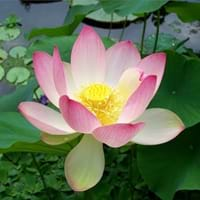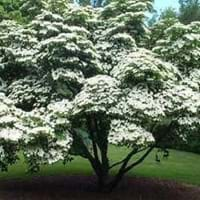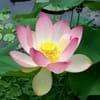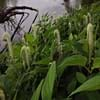Life Span
Perennial
Perennial
Origin
Southern Asia
North America, United States, Northeastern United States, Mid-Atlantic United States, Southeastern United States, North-Central United States, Canada
Types
Not Available
Chinese kousa dogwood, Blue Shadow kousa, Weaver's Weeping dogwood
Habitat
Ponds
gardens, Near ponds, Wet Woods
USDA Hardiness Zone
9-12
4-8
Sunset Zone
21,22
2a, 2b, 3a, 3b, 4, 5, 6
Habit
Clump-Forming
Spreading
Flower Color
White, Red, Pink, Light Pink, Hot Pink, Rose, Coral
White, Ivory
Flower Color Modifier
Bicolor
Bicolor
Fruit Color
Non Fruiting Plant
Purple, Black
Leaf Color in Spring
Lime Green, Sea Green
Green
Leaf Color in Summer
Lime Green, Sea Green
Green
Leaf Color in Fall
Lime Green, Sea Green
Burgundy
Leaf Color in Winter
Not Available
Not Available
Leaf Shape
Orbicular
Oval
Plant Season
Summer, Fall
Spring, Summer, Fall, Winter
Sunlight
Full Sun, Partial Sun
Partial Sun, Partial shade
Type of Soil
Clay, Loam
Clay, Loam
The pH of Soil
Neutral
Acidic
Soil Drainage
Poorly Drained
Well drained
Bloom Time
Late Spring, Early Summer, Summer, Late Summer
Late Spring, Early Summer
Tolerances
Wet Site
Cold climate, Soil Compaction
Where to Plant?
Container, In Water, Pot
Ground
How to Plant?
From Rhizomes, Seedlings
Seedlings, Stem Cutting
Plant Maintenance
Medium
Medium
Watering Requirements
Requires 4 to 8 inches of water above the soil line
Allow to dry out slightly between watering, occasional watering once established
In Summer
Lots of watering
Lots of watering
In Spring
Moderate
Moderate
In Winter
Average Water
Average Water
Soil pH
Neutral
Acidic, Neutral
Soil Type
Clay, Loam
Loam, Moist, Well drained
Soil Drainage Capacity
Poorly Drained
Well drained
Sun Exposure
Full Sun, Partial Sun
Full Sun, Partial Sun, Partial shade
Pruning
Cut away fading foliage
Prune if you want to improve plant shape, Prune lower leaves, Prune once the plant is tall enough
Fertilizers
20N–4.4P–16.6K at 20-d intervals
Fertilize in early spring, Mulch
Pests and Diseases
Aphids, Caterpillars
Crown rot, Leaf spot, Red blotch, Whiteflies
Plant Tolerance
Drought
Humidity, Light Frost
Flower Petal Number
Single, Double, Semi-Double
Single
Showy Bark
No
Not Available
Foliage Texture
Bold
Medium
Foliage Sheen
Matte
Glossy
Attracts
Beetles, Insects
Birds, Butterflies, Hummingbirds, Squirrels
Allergy
Constipation
allergic conjunctivitis, Headache, Pollen
Aesthetic Uses
Beautification
Beautification, Cottage Garden, Showy Purposes
Beauty Benefits
Promotes healthy skin, Provides herbal hair care
For treating wrinkles, Makes teeth white, Making cosmetics, Skin cleanser
Environmental Uses
Air purification
Forms dense stands, Nesting sites for birds, Shadow Tree, soil stabilisation
Medicinal Uses
Antidiarrhoeal, Astringent, Cancer, Cardiotonic, Febrifuge, Hypotensive, Resolvent, Stomachic, Tonic
Acne, Antibiotic, Appetite enhancer, Cough, Diuretic, Emollient, Nutrients, Weight loss
Part of Plant Used
Flowers, Leaves, Root, Seeds, Stem
Bark, Flowers, Fruits, Leaves
Other Uses
Leaves are used to wrap small parcels, Roasted seed is used as a coffee substitute, Root is used as a vegetable
Application in Handicrafts, Decoration Purposes, Grown for shade, Used as Ornamental plant
Used As Indoor Plant
Yes
No
Used As Outdoor Plant
Yes
Yes
Garden Design
Feature Plant, Tropical, Water Gardens
Feature Plant, Foundation, Mixed Border
Botanical Name
NELUMBO nucifera
CORNUS alternifolia
Common Name
East Indian Lotus, Sacred Lotus
Alternate-leaved Dogwood, Pagoda Dogwood
In Hindi
पवित्र कमल
Cornus
In German
Heiliges Lotus
Wechselblättriger Hartriegel
In French
Lotus Sacré
Cornus
In Spanish
loto sagrado
Cornus alternifolia
In Greek
ιερή Lotus
Cornus
In Portuguese
Lotus sagrado
Cornus
In Polish
Sacred Lotus
Dereń
In Latin
sacra Lotus
Cornus
Phylum
Magnoliophyta
Magnoliophyta
Class
Magnoliopsida
Magnoliopsida
Family
Nymphaeaceae
Cornaceae
Clade
Angiosperms, Eudicots
Angiosperms, Asterids, Eudicots
Tribe
Not Available
Not Available
Subfamily
Nelumbonaceae
Not Available
Number of Species
Not Available
Not Available
Season and Care of Sacred Lotus and Pagoda Dogwood
Season and care of Sacred Lotus and Pagoda Dogwood is important to know. While considering everything about Sacred Lotus and Pagoda Dogwood Care, growing season is an essential factor. Sacred Lotus season is Summer and Fall and Pagoda Dogwood season is Summer and Fall. The type of soil for Sacred Lotus is Clay, Loam and for Pagoda Dogwood is Clay, Loam while the PH of soil for Sacred Lotus is Neutral and for Pagoda Dogwood is Acidic.
Sacred Lotus and Pagoda Dogwood Physical Information
Sacred Lotus and Pagoda Dogwood physical information is very important for comparison. Sacred Lotus height is 30.00 cm and width 90.00 cm whereas Pagoda Dogwood height is 550.00 cm and width 490.00 cm. The color specification of Sacred Lotus and Pagoda Dogwood are as follows:
Sacred Lotus flower color: White, Red, Pink, Light Pink, Hot Pink, Rose and Coral
Sacred Lotus leaf color: Lime Green and Sea Green
Pagoda Dogwood flower color: White and Ivory
- Pagoda Dogwood leaf color: Green
Care of Sacred Lotus and Pagoda Dogwood
Care of Sacred Lotus and Pagoda Dogwood include pruning, fertilizers, watering etc. Sacred Lotus pruning is done Cut away fading foliage and Pagoda Dogwood pruning is done Prune if you want to improve plant shape, Prune lower leaves and Prune once the plant is tall enough. In summer Sacred Lotus needs Lots of watering and in winter, it needs Average Water. Whereas, in summer Pagoda Dogwood needs Lots of watering and in winter, it needs Average Water.





